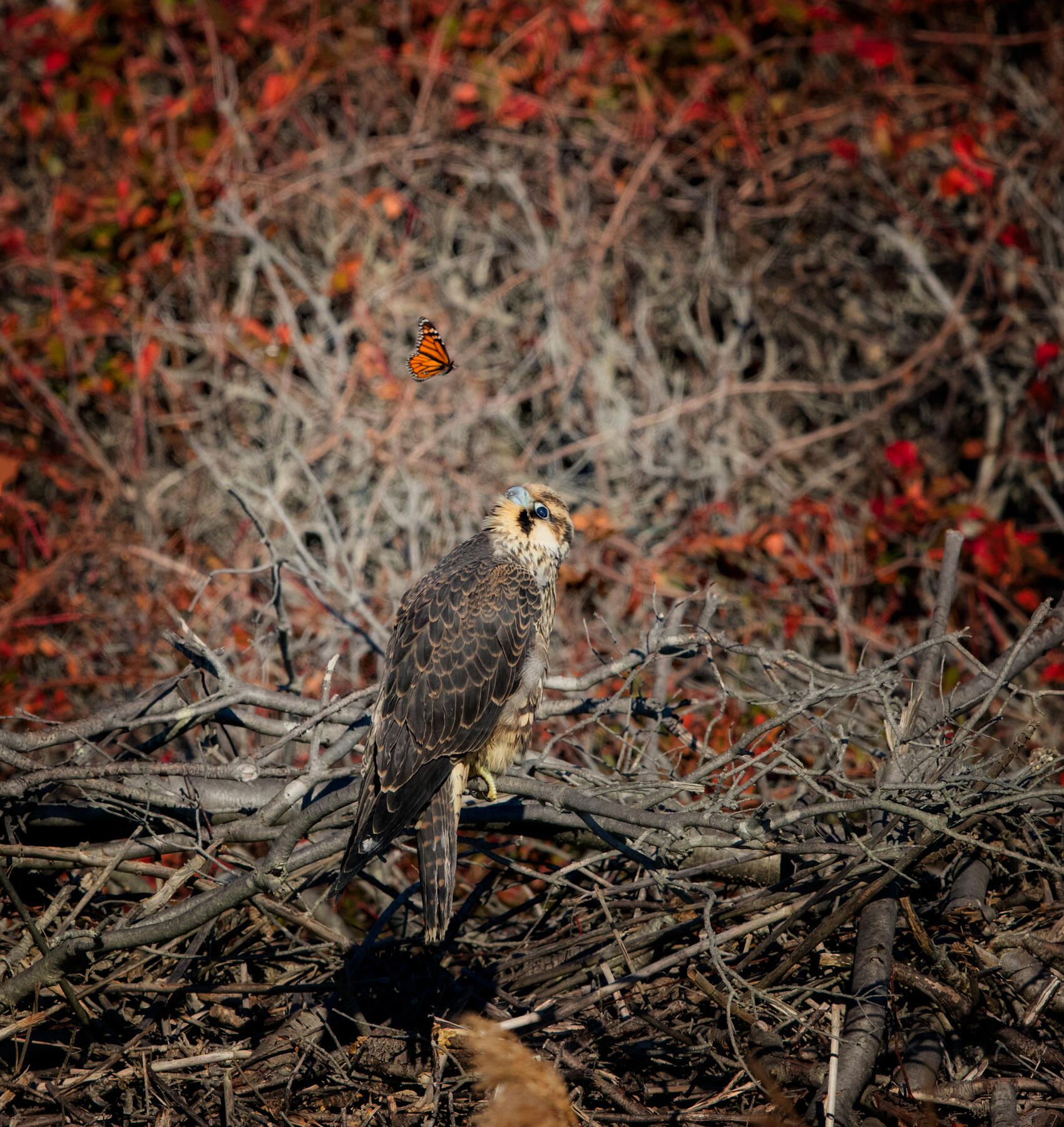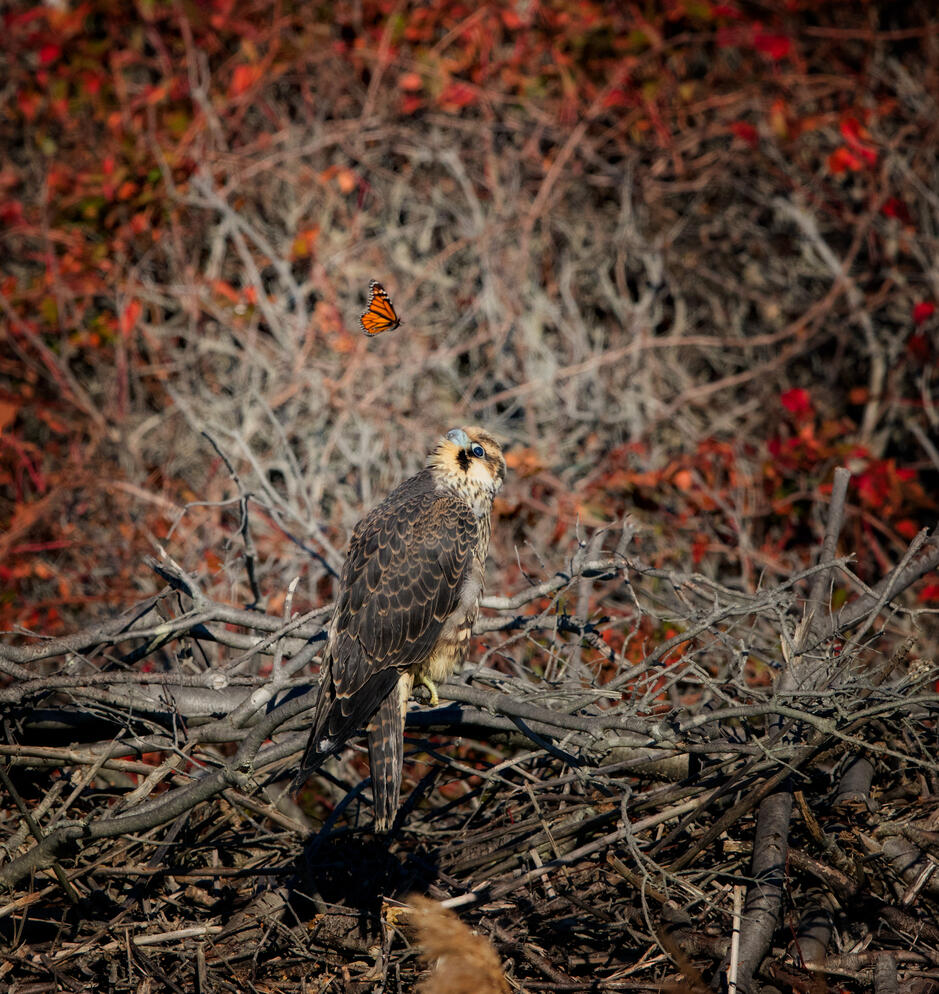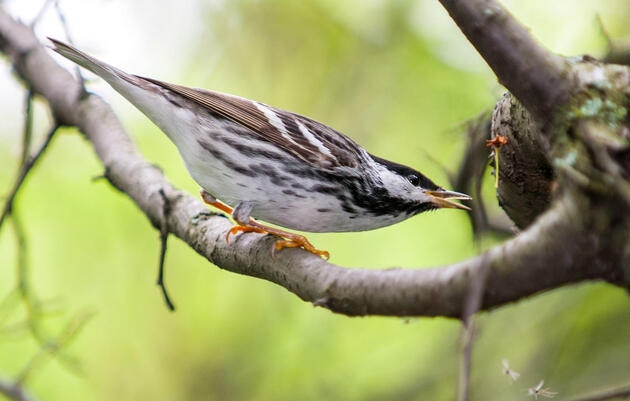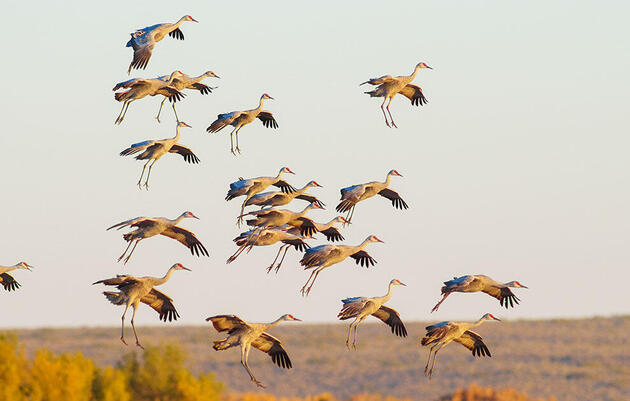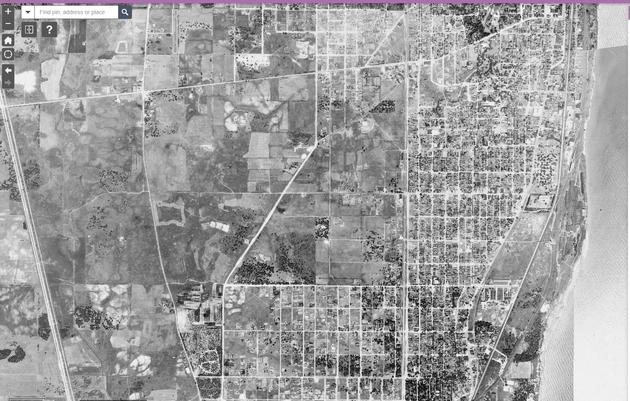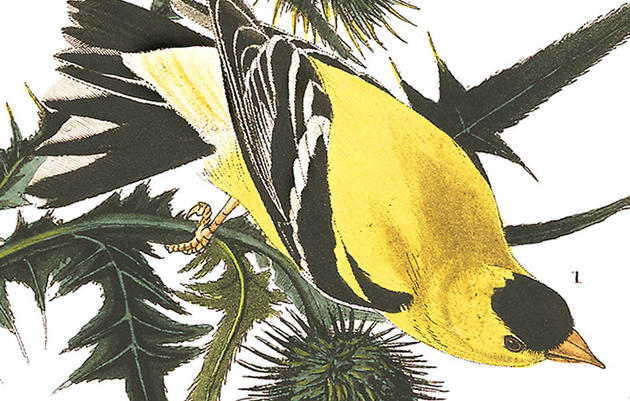Bird migration is one of the most astonishing spectacles in nature.
Every spring and fall, birds weighing less than a quarter fly thousands of miles across open water, mountains, and our neighborhoods until they reach their breeding grounds in the Great Lakes, or their wintering grounds in Central and South America. Along the way, birds rely on stopover habitat to provide them with the food and protection they need to complete the next leg of their journey.
Audubon Great Lakes has created this portal to help you learn more about the remarkable journeys birds take, some of the special places these birds call home, as well as some virtual bird walks and resources to help you learn what you can do to make the Great Lakes a thriving region for birds.
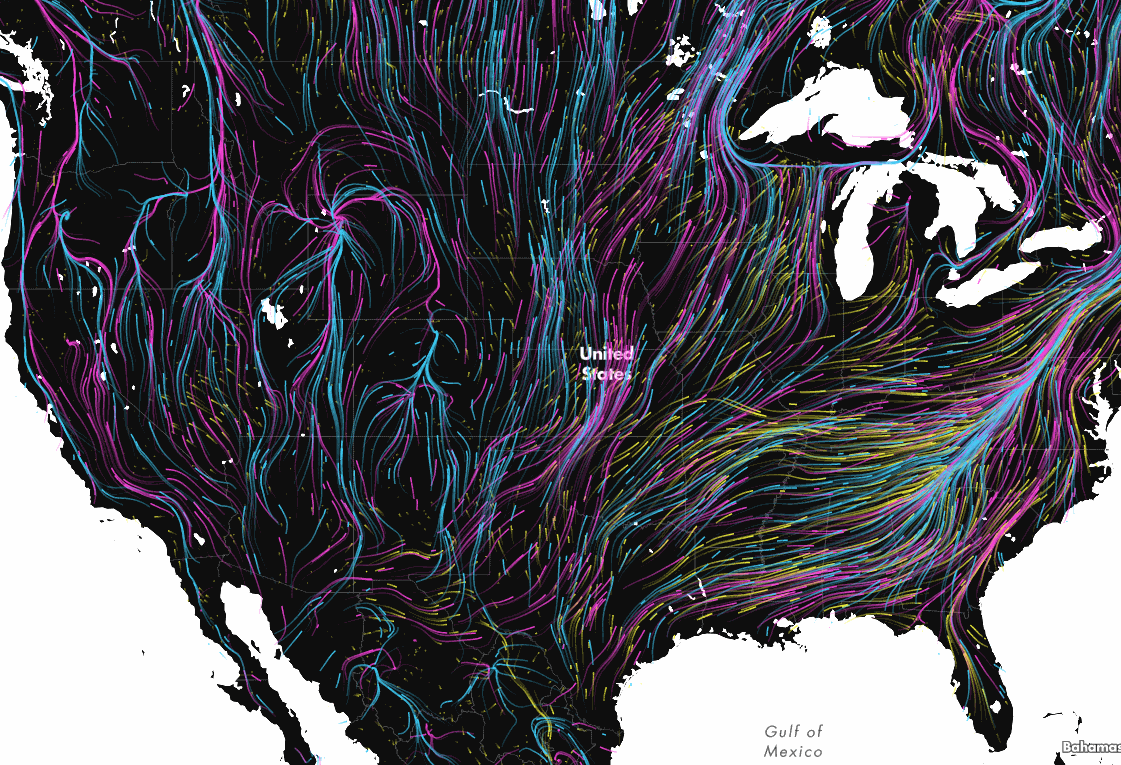
The blue, pink and yellow lines represent the projected paths of birds, mammals, and amphibians, respectively, as they make their way north to cooler climates. Map: Dan Majka
More on Bird Migration
Migration takes Flight: Yellow-breasted Chat
A bizarre series of hoots, whistles, and clucks, coming from the briar tangles, announces the presence of the Yellow-breasted Chat. The bird is often hard to see, but sometimes it launches into the air to sing its odd song as it flies, with floppy wingbeats and dangling legs, above the thickets. This is our largest warbler, and surely the strangest as well, seeming to suggest a cross between a warbler and a mockingbird.
Greenbelt Forest Preserve | Lake County, IL
Take an immersive trip through three sites in our region important to birds, conservation priorities and our communities. Learn about the wildlife and many different bird species you might encounter at each site and the unique features that make them special to both birds and people. Enjoy!
Tips to maximize your experience:
1. Turn audio/narration ON (gear symbol on top right) to hear bird calls and sounds of nature.
2. Pan through the various scenes using the right and left arrows at the bottom of the expedition pane.
3. While moving through panes, click on 'points of interests' (ex. photo icons) to activate the information pop-ups.
4. If you have a virtual reality headset, open the tour in the Expeditions app.
5. Make sure to scroll down and explore all THREE expeditions:
Greenbelt Forest Preserves & the Birds
Visit Greenbelt Forest Preserves
The preserve offers 5 miles of trails for hiking, 4 miles of trails for bicycling and cross-country skiing, and a 1-mile self-guided nature trail.
Guide to Birds of Lake County, Illinois
"Learn the best times and places to see different bird groups in Lake County, Illinois!"
Plantings for Fall Migrants
Consider planting native plants that provide berries and seeds for fall migrants.
Migration takes Flight: Ruby-throated Hummingbird
Hundreds of kinds of hummingbirds nest in the American tropics, and more than a dozen in the western U.S., but east of the Great Plains there is only the Ruby-throat. There it is fairly common in summer in open woods and gardens. Hovering in front of a flower to sip nectar, it beats its wings more than 50 times per second. Impressive migrants despite their small size, some Ruby-throats may travel from Canada to Costa Rica.
Aprendiendo a Observar Aves
¿Quieres aprender a observar aves y registrar tus observaciones?
Refugio Mariscal de Audubon Great Lakes te enseñara cómo.
Translation: Want to learn how to birdwatch and record your observations?
Refugio Mariscal from Audubon Great Lakes shows you how.
Wild Indigo Nature Explorations
Wild Indigo Nature Explorations is a community engagement program that seeks to build lasting relationships between urban communities of color and their local natural areas. The goal is to demonstrate the connection between healthy natural habitats and healthy urban communities via activities that familiarize adults and children with the nature and wildlife that share the spaces where they live, work, and play.

Wild Indigo Nature Explorations. Photo: Audubon Staff.
Wild Indigo Nature Explorations
Wild Indigo Nature Explorations is a community engagement program that seeks to build lasting relationships between urban communities of color and their local natural areas.
Ave del Día | Bird of the Day
Audubon for Kids! | ¡Audubon para niños!
“If a child is to keep their inborn sense of wonder, they need the companionship of at least one adult who can share it, rediscovering with them the joy, excitement, and mystery of the world we live in,” Rachel Carson wrote in 1956. We hope these lessons, which we’ll refresh each week with a new theme, will help you you find awe and inspiration in nature together.
Migration takes Flight: Palm Warbler
A bird of thickets and open areas, usually seen low or on the ground. Birds from the easternmost part of the range ("Yellow Palm Warblers") are rather colorful, but most others are quite drab; however, they can be recognized by the constant bobbing of their tails. Many Palm Warblers spend the winter in the southeastern United States, especially in Florida, where they may be seen near palm groves but not up in the palms themselves.
Ways You Can Help
Join A Chapter
Audubon chapters create a culture of conservation in local communities through education and advocacy, focusing on the conservation of birds and conservation of important habitats.
Donate to Audubon
Help secure the future for birds at risk from climate change, habitat loss and other threats. Your support will power our science, education, advocacy and on-the-ground conservation efforts.

